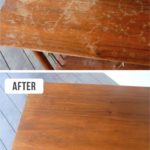1. Sorting groups of items to tidy up
To make cleaning up easier and faster, it is important to start by sorting the different groups of items that need to be tidied up, such as clothes, kitchen utensils, books, and toys. This step is particularly important for families with multiple members, as sorting all the clothes in the rooms before moving on to other groups of items will help complete the task more efficiently.
Once sorted, it is recommended to organize the items in boxes or cardboard boxes to keep them tidy. Simply store them neatly afterwards to finish the task.

2. Prioritize cleaning up from the beginning
Cleaning up in a specific order is a key aspect that the Japanese emphasize. Prioritizing the order of cleaning not only makes the process more logical, but also ensures that no tasks are missed. It also helps reduce the worry of not knowing the amount of work ahead of time.

The recommended cleaning order according to the Japanese is to start with clothes (pants, bags, shoes, and hats), then move on to books, documents, followed by other small items based on personal preferences, and finally organize sentimental items.
3. Fixing the position of objects
The Japanese believe that fixing the position of objects can greatly speed up the cleaning process. This is because when the position of objects is fixed, you will know their exact location without having to think about it when you need to find or place them.

Furthermore, fixing the position of objects helps establish a habit of organizing items after use, making the cleaning process even simpler.
4. Cleaning up by item type instead of by room
Typically, people clean their houses from one room to another, starting with the living room, then moving on to the bedroom and kitchen. However, according to the Japanese, this is not the most efficient way to clean a house as everything can easily get scattered from one room to another shortly after cleaning.
Instead, the Japanese recommend cleaning up by item type, such as clothes, shoes, books, and pictures. Following this order significantly improves the effectiveness of the cleaning process.

5. Not holding onto unnecessary items
Many individuals often struggle with the mindset of “holding onto things is wasteful, but getting rid of them causes guilt.” This leads to the accumulation of unused items in the house, taking up space, and creating a cluttered environment.

It is advisable to let go of old clothes, shoes, and personal items that are no longer used. If one feels hesitant, they can try repurposing them or donating them to others who could use them. The key is to avoid regretting the decision of getting rid of unnecessary items.
6. Arrange items vertically
Arrange items of the same type vertically whenever possible. This method, recommended by author Mari Kondo, helps in managing belongings, prolongs the lifespan of objects, and makes them easier to clean.

For example, when folding clothes, arranging them vertically not only saves space but also makes it easier to select and take out clothes. This is because when clothes are arranged horizontally, they can become stacked on top of each other, making it more inconvenient to access the desired piece.
7. Opt for minimalist furniture
The Japanese are well-known for their minimalist lifestyle. This approach not only creates more spacious and organized living spaces, but also simplifies life. One of their secrets is to use minimalist furniture.

Choosing and using minimalist furniture can create a spacious, tidy, and aesthetically pleasing environment, while making it easier to keep belongings clean and organized. Additionally, minimalist furniture can add attractive highlights to the interior design of a home.
8. Follow the 15-minute rule for cleaning
According to the 15-minute rule, spend 5 minutes tidying up each of the three rooms that you frequent the most: the living room, bedroom, and kitchen. Repeat this process every day.
This method helps save time on cleaning while ensuring cleanliness. Regularly tidying up these rooms keeps the house cleaner and prevents excessive effort and exhaustion.

10. Clean the kitchen area daily
Develop the habit of cleaning the kitchen area every day to maintain a clean and comfortable space for cooking. Instead of leaving it until the end of the day, take the time to clean and wash the kitchen area after cooking.
Furthermore, clean the pre-processing utensils before sitting down for a meal. This creates a clean, inviting space and enhances the enjoyment of the meal.

Have you discovered some of the “cleaning” secrets for your home? If you have any other tips, feel free to share them in the comments below!
6 Strategies to Get Your Closet Organized and Neat
If you’re looking to get your wardrobe in order, proper cleaning and organization methods are key. Having a cluttered closet is a frequent problem in many households due to the accumulation of clothing, footwear, accessories, and other items. To prevent the mess, it’s important to establish the right organizing techniques.














